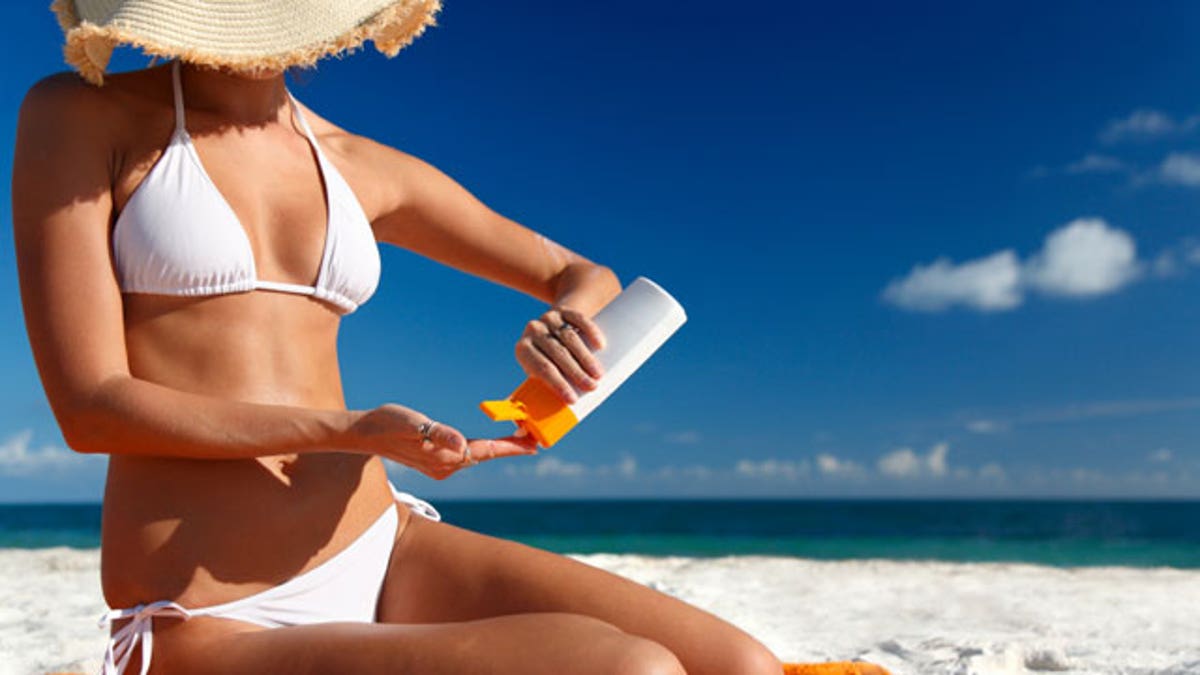
(iStock)
Sun: It's the best part of the summer and the worst thing for your skin. Besides being the biggest cause of skin cancer (the most common form of the big C in men), the sun's rays are about 90 percent to blame for signs of aging, according to the U.S. Environmental Protection Agency. Think: wrinkles, age spots, and sagging skin. That tan suddenly doesn't look so sexy, does it?
Problem is, most men aren't exactly summer-skin-savvy. According to a recent survey from the Skin Cancer Foundation, just 51 percent of men wore sunscreen in the past year—no wonder twice as many men died of melanoma last year than women.
Ready to study up on your skin smarts? Here, a look at the 6 biggest sun myths.
Base tans prevent sunburns: Fiction
Any color you weren't born with is a sign of DNA damage, said Dr. Zein Obagi, a dermatologist and founder of ZO Skin Health. While it's true that naturally dark skin doesn't burn quite as easily as fair skin does (more pigment = more melanin = more natural protection), any new-to-you color—be it a tan or a burn—is a symptom of your body's attempt to repair your skin's cellular damage due to UV radiation.
Certain foods can help prevent sun damage: Fact
Let's preface this statement: There's never an excuse to not wear sunscreen. But—arming your skin from the inside out can help you look younger, longer. Your secret weapon: Antioxidants. "Blackberries, blueberries, strawberries, artichokes, beans, prunes, pecans, plums, and green tea are all high in antioxidants, which can help protect the skin cells from DNA damage caused by the sun," said cosmetic dermatologist Dr. Ronald Moy, a cosmetic dermatologist and a fellow of the American Academy of Cosmetic Surgery.
___________________________________________________
More From Details:
14 Healthiest Snack Foods You Can Buy
5 Weird Signs You’re Vitamin Deficient
7 Trends You’ll Be Wearing This Fall
Foods That Make You Look Younger
___________________________________________________
Suntans clear up acne: Fiction
Sure, sun dries out your skin, but that isn't necessarily a good thing. "In fact, sun exposure can make acne flare-ups even worse," Obagi said. When it soaks up the sun's rays, skin can become inflamed, both directly causing acne and spurring its production of acne-causing oils. Plus, sun exposure can result in postinflammatory hyperpigmentation (PIH)—a fancy way of saying that post-pimple marks darken more than the rest of your face, so your skin looks even more uneven. Many cases of PIH require aggressive topical treatments and laser resurfacing to reverse, he says.
Sun is a great source of vitamin-D: Fact
There are only three ways to score bone-, heart-, and mood-boosting vitamin D: Through foods, supplements, and yes, the sun. Luckily, a recent study from King's College London shows that while sunblock prevents some of skin's vitamin D synthesis, people who lather up still experience a spike in vitamin D levels after sitting in the sun. If your vitamin D levels are low, shore them up with D-filled foods such as salmon, egg yolks, and mushrooms.
SPF 30 is twice as strong as SPF 15: Fiction
When it comes to SPF numbers, you can pretty much dismiss all reason. SPF 15 blocks 93 percent of UVB rays, while SPF 30 blocks 97 percent; SPF 50, 98 percent; and SPF 100, 99 percent, according to the American Academy of Dermatology. The higher the SPF, the smaller the difference becomes. Whatever your sunscreen's SPF number, it's effective for the same amount of time; reapply every two hours to stay protected.
You should wear sunscreen under your clothes: Fact
While it's not an excuse to hit every nude beach in North America (though it could be), most clothing actually provides very little sun protection. A standard white T-shirt packs an SPF value of about 7—and if it's wet the SPF can go down as low as 3, according to the Skin Cancer Foundation. While the darker and thicker the clothing, the more protection it provides, the hotter it is, too. Your coolest bet: Apply sunscreen where the sun don't shine, too.
